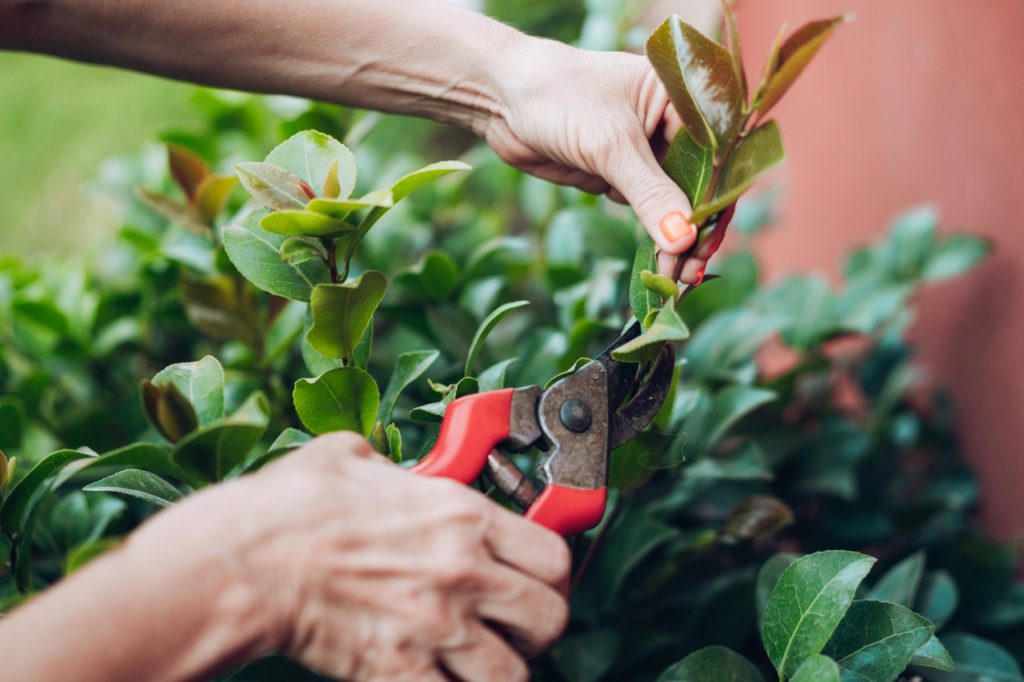You Can Prune Camellia After Flowering, But Be Careful Not To Cut Back Too Hard

Reviewed By COLIN SKELLY

Colin is a Horticulturist and Horticultural Consultant with experience in a range of practical and managerial roles across heritage, commercial and public horticulture. He holds the Royal Horticultural Society’s Master of Horticulture award and has a particular interest in horticultural ecology and naturalistic planting for habitat and climate resilience.
Contributions From PATRICIA SHORT

Patricia has over 35 years of experience growing camellias in her garden and is passionate about the joy they can bring to the dull winter months.
IN THIS GUIDE
Camellias are reckoned to be plants of choice for formal gardens, but no matter what your garden type, one of the 3,000-plus hybrids will make a lovely evergreen bush to display beside your front door.
So how much time would you have to set aside for a camellia shrub if you grew one?
Well, where pruning is concerned, camellias are considered low-maintenance plants.
You don’t have to prune a camellia shrub at all, but if you would like to keep your bush in tip-top shape here are a few pointers:
- Deadhead throughout the flowering season.
- Prune your camellia after the flowering period is over.
- To revive a dying camellia shrub, you can hard prune in March.
These optional tasks are explained in more depth below.
| Difficulty | Easy |
| Equipment Required | Gardening gloves, secateurs or pruning shears |
| When To Prune | Deadhead throughout flowering season, prune back once flowering has finished |
1) Deadhead Throughout The Flowering Season
Deadheading is an ongoing gardening task that can be carried out during the flowering season.
This task can be carried out to maximise the plant’s ornamental value and to stop the production of seeds, which will help the plant focus on producing more beautiful blooms.

Simply pinch off withering (or withered) blooms by holding the stalk between thumb and fingers and pulling off with a quick twist-turn.
Alternatively, you can always use secateurs for more assured and cleaner deadheading if you are uncertain about pinching off wilting blooms.
Simply cut the stalk 2-3cm from the flower. See more on deadheading here.
2) Prune Back After Flowering
Patricia Short from the International Camellia Society suggests that your camellia flowers might not need to go to waste after the flowering season has ended:
“If pruning is needed to keep a plant in shape or to fit a space, prune as you would roses, right after blooming has ended.
“Alternatively, you can cut some smaller blooming branches to bring inside, for a vase.
“They might not last as long as roses, but you will still have a few days of pleasure, while still shaping the plant as desired”.
Maintenance pruning can be done any time of the year, though the best time to do so is soon after the end of the flowering season.
The majority of camellia varieties are naturally well-shaped shrubs, so pruning for shape is not really necessary nor do I advise it.

However, in order to foster an even shape (globular and oval are most common) feel free to prune straggly branches that are jutting out with a pair of secateurs.
Apart from that, cut off any diseased or dead branches at the point of attachment.
3) Hard Prune Dying Shrubs In March
I do not recommend that you hard prune camellias without good reason.
Where camellias are concerned, hard pruning should only be necessary in rare cases, such as when the bush has somehow become seriously misshapen and unsightly or is badly infested with pests or disease.
If you must do a hard prune, do so from mid-late February to early-mid March.
Using pruning shears, cut down the bush by up to two-thirds so that only one-third remains.

“Pay attention to planting distances when selecting new camellias,” shares Master Horticulturist Colin Skelly.
“There is always a temptation to plant too closely, which in time will mean that the plants compete and can cause misshapen growth as plants reach for the light.
“If inherited, this can be managed by selectively removing branches to provide space for each plant or the plants can be pruned hard back to start from scratch.
“This will look severe but can be the quickest way to restore order.”
Be sure to feed the bush after any hard prune.
Bear in mind that after a hard prune, the plant will likely take 2-3 years before it resumes proper flowering.

